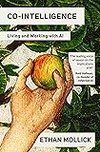
Co-Intelligence

“This suggests that AI may have an equalizing effect on the legal profession, mitigating inequalities between elite and nonelite lawyers.”
Ethan Mollick • Co-Intelligence
Today’s AI cannot achieve this entire vision. It is not able to connect complex concepts, and it still hallucinates too much. Yet, in our experiments at Wharton, we have found that today’s AI still makes a pretty impressive coach in limited ways, offering timely encouragement, instruction, and other elements of deliberate practice.
Ethan Mollick • Co-Intelligence
This same sort of training crisis is going to spread as AI automates more and more basic tasks. Even as experts become the only people who can effectively check the work of ever more capable AIs, we are in danger of stopping the pipeline that creates experts.
Ethan Mollick • Co-Intelligence
The benefits of educating the world are immense; one recent study suggests that closing the gap would be worth five times this year’s global GDP!
Ethan Mollick • Co-Intelligence
You cannot ask an AI to detect AI writing either—it will just make up an answer. Unless you are doing in-class assignments, there is no accurate way of detecting whether work is human-created.
Ethan Mollick • Co-Intelligence
a powerful, adaptable, and cheap personalized tutor is the holy grail of education.
Ethan Mollick • Co-Intelligence
With lower-cost workers doing the same work in less time, mass unemployment, or at least underemployment, becomes more likely, and we may see the need for policy solutions, like a four-day workweek or universal basic income, that reduce the floor for human welfare.
Ethan Mollick • Co-Intelligence
This suggests the potential for a more radical reconfiguration of work, where AI acts as a great leveler, turning everyone into an excellent worker.
Ethan Mollick • Co-Intelligence
Those who had the weakest skills benefited the most from AI, but even the highest performers gained.